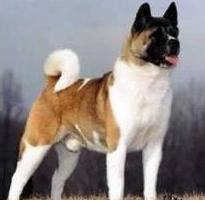Animals often surpass people in moral qualities: they will never deceive, they will not leave in trouble, they will not conceal an insult, they will not betray. They love their master, no matter what, as children love their parents. No wonder there are expressions such as "dog loyalty" and "puppy love." The story of a dog named Hachiko is the most striking and most famous example of fidelity to man.
On November 10, 1923, a puppy was born in Japanese Akita Prefecture. They decided to give it to the professor at the University of Tokyo, Hidesaburo Ueno, who, without thinking twice, named the baby Hachiko. For 18 months, Hachiko did not part with the owner, every morning accompanied him to work at the station, and at 15.00 he met him. But once, on May 21, 1923, the owner did not return, he died of a heart attack at the university. For 9 years, the dog came to the station at the usual time and waited in vain until the evening. Neither the professor’s relatives, nor his friends were able to pick up Hachiko from the station, he stubbornly returned to where he left the owner for the last time.
People fed him and admired the loyalty of the dog. In 1932, an article appeared in a Tokyo newspaper about a faithful dog, 9 years old, waiting for its owner. So Hachiko became a celebrity, people went to the Shibuya station only to see him. After another 3 years, March 8, 1935, the dog died. An autopsy showed that the cause of death was cancer and heartworms. This story shocked the Japanese so much that national mourning was declared for Hachiko. At the station, where he spent 9 years waiting, a monument was erected to a dog, which has become a symbol of devotion and love all over the world. Thanks to Hachiko, the breed of these amazing dogs has gained a new name.
Hachiko: breed
A film adaptation of the history of Hachiko led to the fact that the nickname of the dog became the second name of the breed, and for many - even the first. A film with Richard Gere made this dog so popular that many rushed to find out what breed Hachiko was. Akita inu is the name of this breed. This is one of the 14 oldest breeds of dogs, the genotype of which differs little from the genotype of a wolf. She appeared on the island of Honshu, in the province of Akita, and was originally called akitamatagi, or a dog hunting bears. This is the largest Japanese dog. For a long time this breed of dog was in decline. Hachiko became the reason that Akita Inu dogs were recognized as a national treasure. That is, after the story with Hachiko, the breed again became very popular.

The main qualities of Akita Inu are restraint, silence, aristocracy, high intelligence and, of course, legendary devotion to the owner. And also - cunning, self-confidence and self-will. In a word, this dog is a real person. The almost human mind allows Akita not only to remember events from puppyhood, but also to associate them with the consequences that they had for her. Communication with this dog may give the impression that she does not just think, but also makes decisions.
This breed of dog is very dependent on human society. Without attention and communication, her behavior may not form correctly; she may acquire destructive features. If the dog does not form social contacts in a timely manner, you can get a timid or, conversely, aggressive and uncontrollable pet. With proper training, these are cheerful, agile and very attractive dogs. They are great companions for their masters and fearless guards. The Akites in the pack do not know fear at all and will defend their territory until the end. Another dominance of the breed is its dominance; in the company of other dogs, the fighting qualities of this cute dog are noticeably activated.
You should not succumb to the plush charm of Akita Inu, because, for all their unlimited devotion to the owner, they are very wary of strangers. This does not mean that they will rush at strangers, they simply are not those who will lick their hands to everyone who has shown a desire to stroke them.
Care for akito inu is simple, it is enough to comb them once a week, and during molting - three or four times. They feel great both in the apartment and in the yard.
Everyone who decides to have his own Hachiko, whose breed has an ancient, centuries-old history, should know that he is not acquiring a toy or a character from a famous film, but a new family member who needs to be educated and respected.